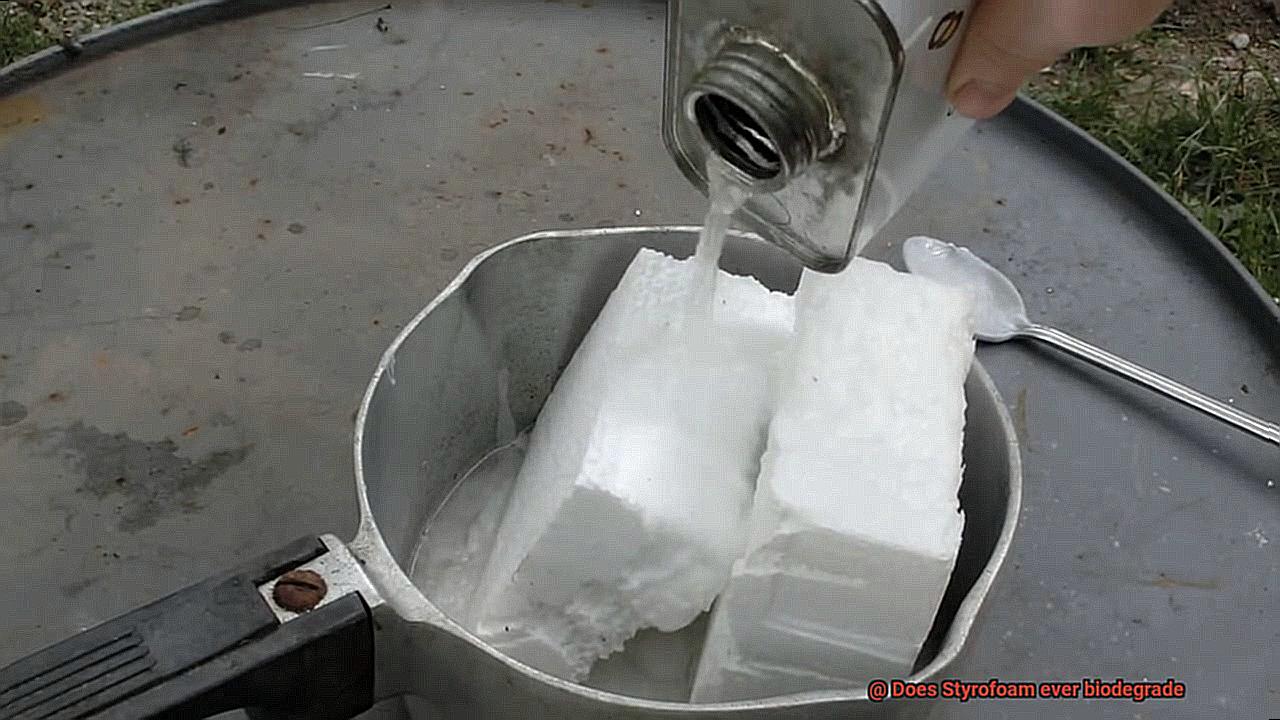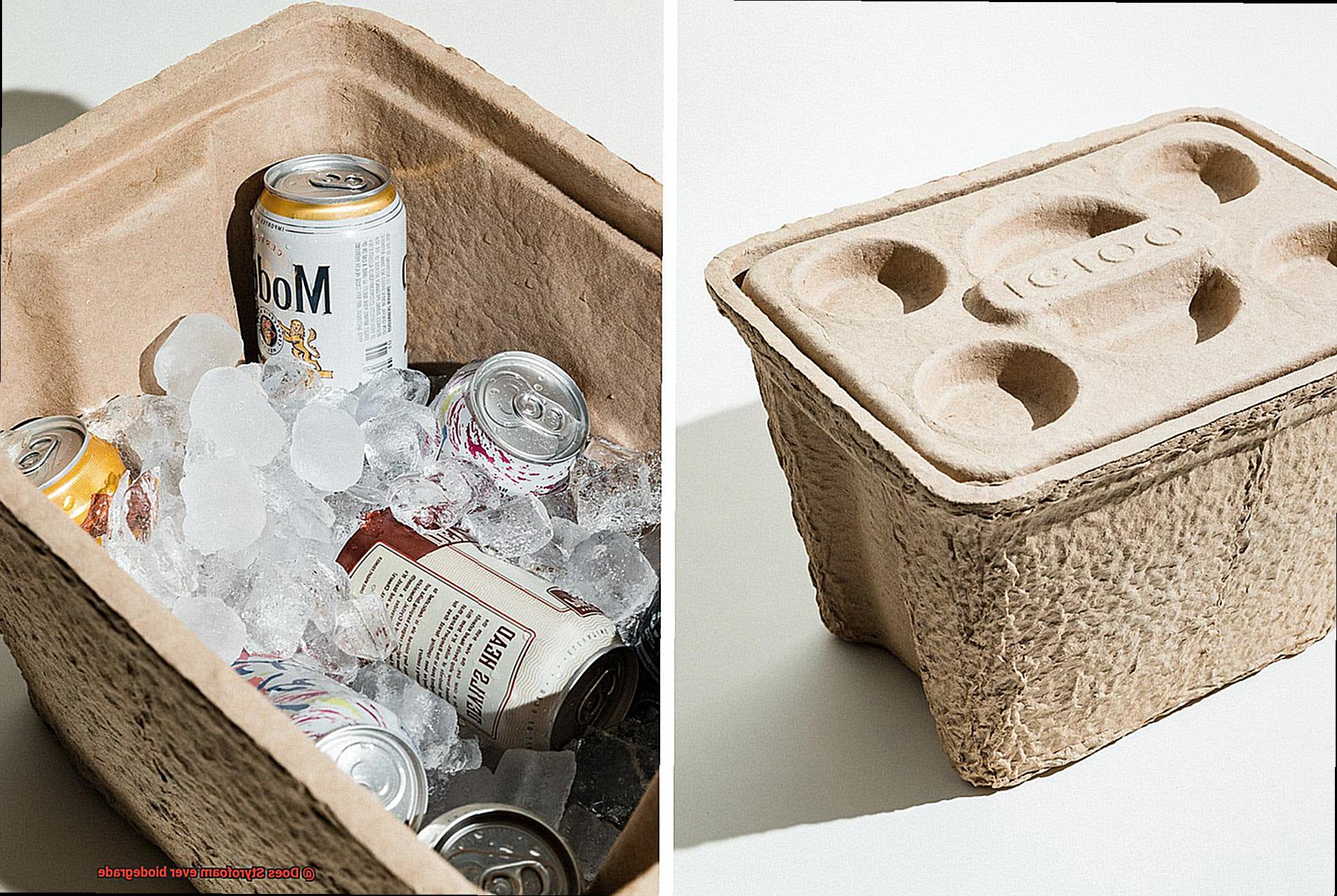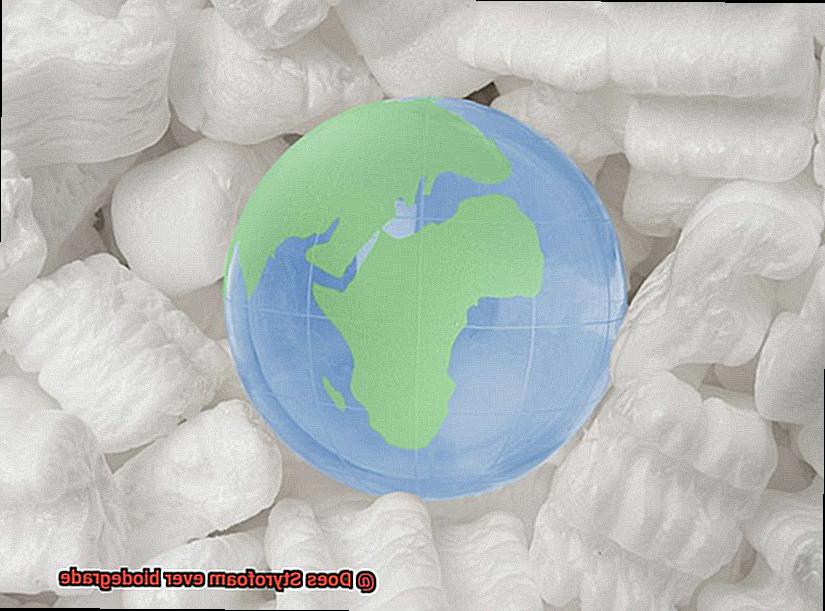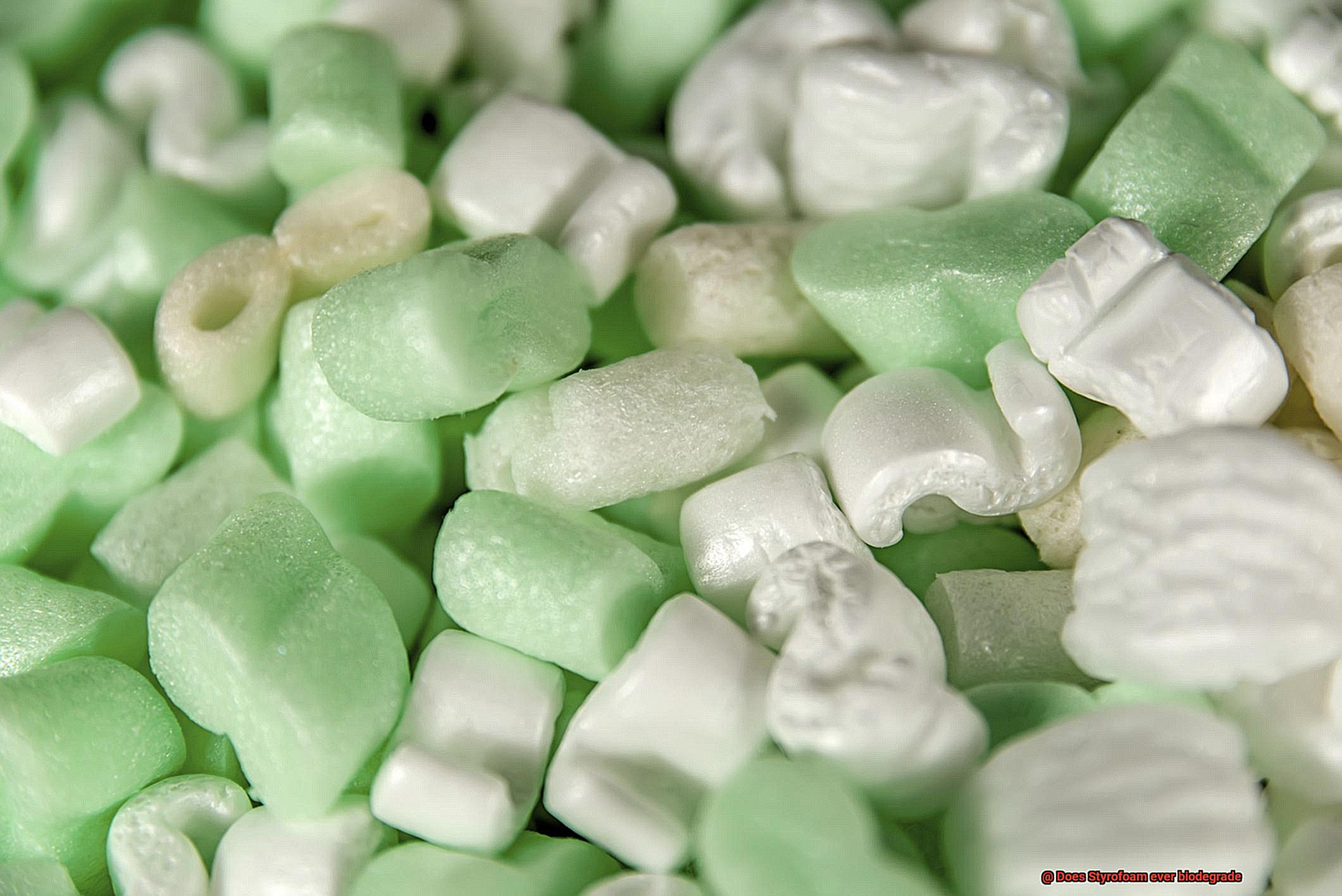Styrofoam is everywhere. It’s in our coffee cups, our takeout containers, and even our walls. But did you know that this convenient material has a dark side? Styrofoam is notorious for its negative impact on the environment, and it all comes down to one question: does Styrofoam ever biodegrade?
The answer is no. Styrofoam is made from polystyrene, a petroleum-based plastic that doesn’t decompose naturally. Every time we throw away a Styrofoam product, it ends up in landfills where it will remain for hundreds of years, polluting our planet for generations to come.
But don’t despair just yet. Science is stepping in to find a solution to this problem. Researchers are working tirelessly to develop new technologies that create biodegradable alternatives to styrofoam. And there have been some promising breakthroughs.
In this blog post, we’ll dive deep into the question of whether Styrofoam ever biodegrades. We’ll explore what happens when it enters the environment and share the latest scientific developments in creating alternatives to this ubiquitous material.
So join me on this journey as we uncover the science behind one of our everyday conveniences – styrofoam – and discover how we can protect our planet from its harmful effects. Buckle up and get ready for an informative and engaging ride.
What is Styrofoam?
Contents
Styrofoam is a type of polystyrene foam that you probably encounter every day, whether in your morning coffee cup, takeout container, or packaging materials. This versatile material was first invented by the Dow Chemical Company in the early 1940s and has since gained widespread use due to its lightweight, insulating properties, and low cost.
Styrofoam is made from polystyrene beads that are expanded with heat and pressure before being molded into various shapes and sizes. Its durability is legendary, as it can remain intact for hundreds of years without breaking down. However, this durability is also what makes Styrofoam a major environmental concern.
Due to its non-biodegradable nature, Styrofoam waste ends up in landfills where it takes up space and contributes to plastic pollution accumulation. Moreover, Styrofoam is not easily recyclable due to its lightweight nature and its tendency to break apart easily.
Styrofoam’s negative impact on the environment cannot be ignored. It can take hundreds to thousands of years to decompose fully, leading to a build-up of plastic waste that harms our planet’s ecosystems. Also, Styrofoam breaks down into smaller plastic particles called microplastics that can be ingested by marine life, leading to health problems for animals and humans who consume them.
As consumers become more aware of the environmental consequences of single-use plastics like Styrofoam, there has been a push for eco-friendly alternatives such as biodegradable or compostable materials.

What are the Environmental Concerns of Styrofoam?
This non-biodegradable material poses significant threats to our environment in a plethora of ways.
One of the most concerning facts about Styrofoam is that it cannot naturally break down over time. This means that it can remain intact for hundreds of years, taking up valuable space in landfills and potentially harming wildlife. It’s a common sight to see Styrofoam littering our waterways and natural habitats, where it can cause significant harm to marine life.
Another major issue with Styrofoam is its production process. The manufacturing of polystyrene, which is the primary component of Styrofoam, requires a considerable amount of fossil fuels, contributing to greenhouse gas emissions and climate change. Additionally, the production process can release harmful chemicals and pollutants into the air and water.

Improper disposal of Styrofoam also has negative impacts on the environment. When burned, Styrofoam releases toxic fumes and chemicals into the air, which can prove harmful to both humans and animals alike. When littered or left in natural areas, it can harm wildlife that may mistake it for food or become entangled in it.
It’s evident that the environmental concerns surrounding Styrofoam are grave and need immediate attention. As environmentally conscious consumers, we must strive to choose eco-friendly alternatives like biodegradable or compostable materials. By opting for these sustainable alternatives instead of Styrofoam, we can significantly reduce our impact on the environment and preserve natural resources for future generations.
How Does Styrofoam Break Down?

Styrofoam, the popular thermoplastic polymer used in packaging, insulation, and food service products, is a menace to our environment. This non-biodegradable material can take hundreds of years to decompose in landfills, and its decomposition process can release harmful chemicals and toxic fumes when burned. So, how does Styrofoam break down?
Unlike biodegradable materials, Styrofoam is not recognized by microorganisms as a source of food. Therefore, it slowly photodegrades into smaller and smaller pieces when exposed to sunlight. These small particles or microplastics can then enter the environment and harm wildlife. The decomposition process of Styrofoam can also release harmful chemicals into the environment.
To address this issue, researchers are exploring innovative ways to break down Styrofoam more efficiently. One solution is the use of mealworms and waxworms that consume Styrofoam and convert it into biodegradable waste. Another approach is the use of bacteria that break down polystyrene into biodegradable compounds.
While these solutions are still in early stages of development, reducing our consumption of Styrofoam products and opting for eco-friendly alternatives like biodegradable or compostable materials is key. By doing so, we can significantly reduce our impact on the environment and preserve natural resources for future generations.
What are the Effects of Microplastics on Marine Life and Humans?
Microplastics: A Menace to Marine Life and Human Health
What happens to the plastic waste we generate every day? Sadly, a large chunk of it ends up in the ocean, breaks down into tiny particles, and becomes a significant threat to marine life and human health. These tiny particles are known as microplastics.
Marine animals like fish and sea turtles often mistake microplastics for food. When ingested, these plastics cause physical harm to their digestive systems, leading to starvation or death. The toxic chemicals found in plastics can also be absorbed into their organs and tissues over time, causing long-term health problems.
Humans are not spared either. Seafood consumption is one way we can ingest microplastics. Can you believe that people who regularly consume seafood may ingest up to 11,000 microplastic particles per year? Shocking, right? These particles can accumulate in our bodies and potentially lead to health problems such as inflammation and cancer.
But that’s not all; microplastics have negative impacts on the environment too. They do not decompose quickly and can persist in the environment for hundreds of years. Microplastics can also absorb other pollutants like pesticides and heavy metals, further harming marine life and ecosystems.
It is crucial to reduce our use of single-use plastics like Styrofoam products and properly dispose of plastic waste to prevent further harm to our environment and ourselves. Researchers are exploring innovative ways to break down plastics, such as using mealworms and bacteria, but it’s crucial to take action at an individual level as well.
Alternatives to Styrofoam
Styrofoam may be lightweight and insulating, but it is also not biodegradable and can take hundreds of years to break down in landfills, adding to the mounting problem of plastic waste. Luckily, there are many eco-friendly and efficient alternatives available.
One popular alternative is biodegradable packaging made from materials like cornstarch, bamboo, or mushrooms. These materials break down much faster than Styrofoam and do not harm the environment. They are also just as effective in keeping your products safe and secure during shipping.
Another great option is reusable containers or packaging. Not only does this eliminate the need for single-use packaging, but it also significantly reduces waste. Many companies now offer reusable containers for food delivery or takeout orders, as well as refillable containers for household products such as cleaning solutions. This not only benefits the environment but can also save you money in the long run.
For the adventurous, some businesses are exploring innovative solutions such as edible packaging made from seaweed or other natural materials. While these options may not be widely available yet, they show promise in reducing waste and creating a more sustainable future.
zp4HsMWA3HQ” >
Conclusion
In conclusion, Styrofoam may seem like a harmless material, but it has a dark side. Made from polystyrene, a petroleum-based plastic that doesn’t break down naturally, it poses significant threats to our environment. It takes up valuable space in landfills and can potentially harm wildlife.
But fear not. Science is on the case to find solutions to this problem. Researchers are tirelessly working to develop biodegradable alternatives to Styrofoam. Some exciting breakthroughs include using mealworms and waxworms that eat Styrofoam and convert it into biodegradable waste, as well as bacteria that break down polystyrene into biodegradable compounds.
And there are already many eco-friendly alternatives available for Styrofoam, such as biodegradable packaging made from materials like cornstarch or bamboo, reusable containers, and even edible packaging made from seaweed or other natural materials.
As environmentally conscious consumers, we have the power to make a difference by choosing these sustainable alternatives instead of Styrofoam. By doing so, we can significantly reduce our impact on the environment and preserve natural resources for future generations.





